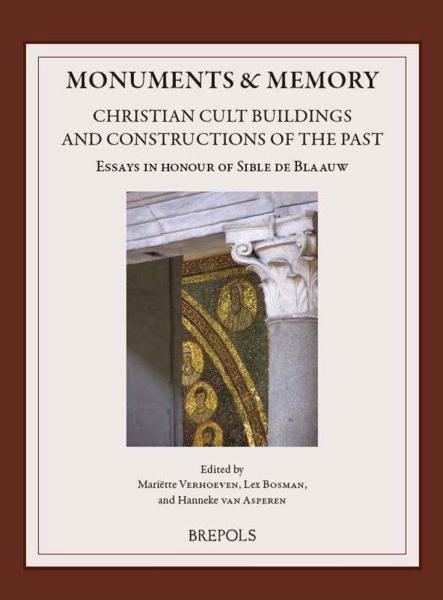
- Pages: 224 p.
- Size:220 x 300 mm
- Illustrations:16 b/w, 181 col.
- Language(s):English
- Publication Year:2025
- € 75,00 EXCL. VAT RETAIL PRICE
- ISBN: 978-2-503-61286-7
- Hardback
- Available
- ISBN: 978-2-503-61287-4
- E-book
- Available
Touring Belgium explores how the printed media occasioned by modern tourism described, reproduced and consecrated not only historical buildings, towns and villages but also railroads, coal mines and factories as a seemingly coherent Belgian ‘patrimony’, enmeshed in political, archaeological and cultural realities.
Maarten Delbeke holds the Chair of the History and Theory of Architecture at the Department of Architecture at ETH Zurich. He has published widely on baroque architecture and art in Rome, France and the Southern Netherlands; on theoretical questions in 18th- and 19th-century European architecture; and on the reception of early modern architecture in the 20th century. He is the founding editor-in-chief of the EAHN open-access journal Architectural Histories.
Maarten Liefooghe is Associate Professor in History, Theory, and Criticism of Architecture at Ghent University. He has published on the architecture and the museography of 19th- and 20th-century artist museums; on early 20th-century and contemporary heritage theories, discourses and practices; and on architecture exhibitions, architecture competitions and other aspects of architecture culture. He is a member of the editorial board of OASE Journal for Architecture.
Touring Belgium presents a wide range of printed media – from travel guides and collected letters to albums, from picture postcards to bibliographies and war-time propaganda – to explore how the print culture developing in the wake of travel and tourism helped to establish a national architectural heritage. Covering material from the period of Belgian independence through the aftermath of World War I, eight historians of art and architecture each situate one main publication against a dazzling background of nineteenth and early twentieth-century cultural discourses, revolutions in image reproduction, and emerging heritage management.
Reproductions in the middle part of the book present the core publications as material objects. These printed artifacts bring into view a nascent heritage that ranges from gothic town halls and dead cities to modern factories and railroad infrastructure; often there is little distinction between what threatens or enshrines the national patrimony. Writers like Schnaase and Hugo, museum conservators like Schayes and Kervyn de Lettenhove, symbolist painters like Hannotiau, innovative lithographers like Simonau, and publishers like Géruzet or the Touring-club de Belgique all bring their concerns to bear on what they see as Belgian heritage. Their preoccupations with patrimony help to craft Belgium as a nation with a history at the crossroads of Europe – historic architecture becomes a reality embedded in the territory as much as an imagery fabricated in print.
Introduction. Aspects of Print Culture, Heritage, and Tourism in Belgium, 1830–1920
Maarten Delbeke, Maarten Liefooghe
Karl Schnaase’s Niederländische Briefe (1834). An Art Historical Journey Through the Low Countries in the Year of the Belgian Revolution
Henrik Karge
Printing and Collecting Architectural History in Belgium (1830–1860). Antoine Schayes and “L’archéologie nationale”
Ellen Van Impe
Composite Belgium. The Guide du touriste en Belgique of 1845 and French Travel Writing in the First Two Decades of Belgian Independence
Maarten Delbeke
Prospects of Belgique Industrielle (1855). A Picturesque Garden as Production Facility
David Peleman
Catalog
Beatriz Van Houtte Alonso
Alexandre Hannotiau’s Picture Postcard Series A Bruges (1900). Between Symbolism and the Picturesque
Stefan Huygebaert
Tourists in the Restoration Debate. A Bibliography of Belgian Heritage (1903) by the Touring Club de Belgique
Jasper Van Parys
Outcry Over Belgium, Vandalized Museum. Henri Kervyn de Lettenhove’s La guerre et les œuvres d’art en Belgique (1917)
Maarten Liefooghe
Michelin’s Illustrated Guide to the Battlefields of the Yser and the Belgian Coast (1920). Guidebook, Field Manual, or Architectural Compendium?
Willem Bekers
Bibliography
Index
Biographies




